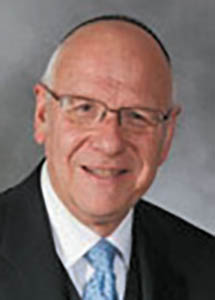
The Yom Tov of Sukkot is unique in many ways, none more than the glaring difference in the sacrificial rite as found in the Torah. The offerings of each and every special day, Rosh Chodesh, Rosh Hashanah and Yom Kippur, Pesach and Shavuot, share a common obligation: one ram and seven 1-year-old lambs. Sukkot is the exception to that rule, as the Torah specifies that each day of Sukkot requires twice the amount, i.e. two rams and fourteen 1-year-old lambs. (Rav Yoel bin Nun of Michlelet Herzog argues that Sukkot is actually two separate holidays that happen to fall out on the exact same days.)
Unique also is the amount of bulls to be offered that varies each and every day of Sukkot, decreasing in number from 13 on the first day of Sukkot to seven on the final day of the holiday. Chazal make this point in Tractate Sukkah (55b), explaining that the number of bulls sacrificed over the Yom Tov equals 70, symbolic of the “70 nations” and hinting that they too are remembered on this holiday and will eventually observe it.
And that idea is reflected in the choice of haftarah for the first day of Sukkot, for, as Rashi explains, the observance of Sukkot is mentioned three times in this selection from Sefer Zechariah. Interestingly, each mention focuses not upon Israel but upon the universality of the holiday, telling of the eventual obligation of all nations to celebrate the holiday during the Messianic era. Indeed, it is an obligation regarded as so important that, if ignored, would carry a punishment to those who failed to heed Hashem’s command.
And yet, I find this selection especially meaningful to us today. The navi Zechariah prophesied in Yerushalayim at the beginning of the Second Temple era. In the final section of his book, the prophet focuses upon the redemption of Israel and specifically the battle of the nations for the conquest of the Holy City. When our haftarah opens, Zechariah depicts this battle and tells of a time when “half the nation will go into exile (leave the city) and half will not be eliminated from the city.” He then goes on to predict the great day when G-d will battle for the city and reunite it.
There was never a time in our history when Jews were allowed to remain in only one half of the city and were banished from the other half—except for the years of 1948-1967. Nor do we know of a great war that would reunite the city—except the Six-Day War. The words of the prophets no longer remain in the “hopefully soon” realm but are being fulfilled in our own time!
I no longer see in these haftarot simple promises for the future.
They are not yesterday’s prophecies. They are today’s headlines!
By Rabbi Neil Winkler
Rabbi Neil Winkler is a past rabbi of the Young Israel of Fort Lee and now lives in Israel.










